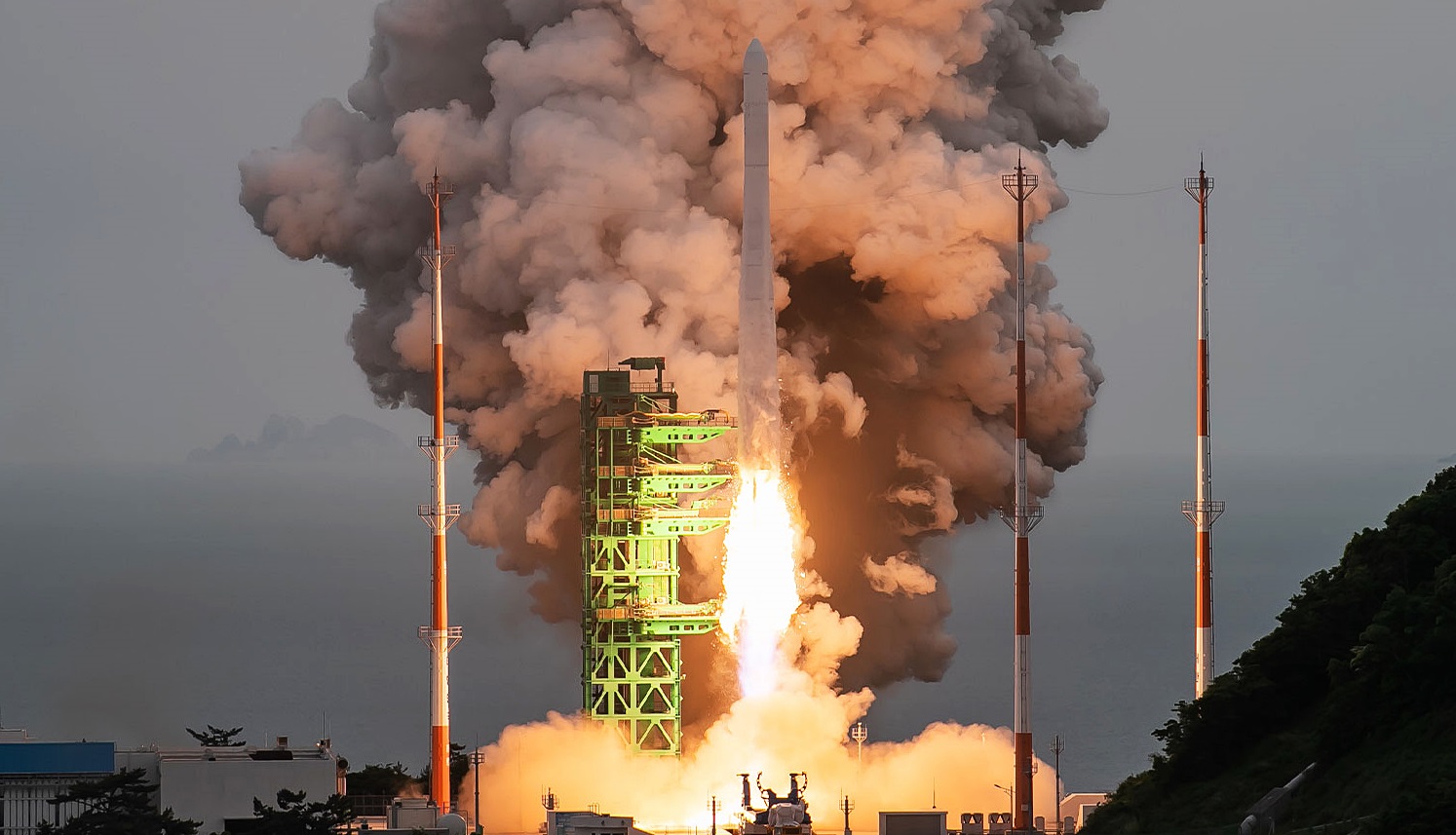By Xu Aiying
Video=Ministry of Science and ICT’s official YouTube channel
The country has successfully launched its domestically developed space rocket KSLV-II, aka Nuri.
This has ushered in a new space age for the nation.
The Ministry of Science and ICT and Korea Aerospace Research Institute (KARI) on May 25 said the third launch of Nuri resulted in its first placement of a working satellite in its planned orbit.
Nuri blasted off at 6:24 p.m. from Naro Space Center in Goheung-gun County, Jeollanam-do Province.
KARI said, “Early analysis of remote reception data (telemetry), which contains information on the launch vehicle’s flight, confirmed that Nuri entered its target orbit and successfully separated and deployed NEXTSat-2 (second next-generation small satellite).”
The engines in the first, second and third stages all burned normally after Nuri’s launch. The fairing also successfully separated and completed the deployment of the NEXTSat-2 and cube satellites.
The NEXTSat-2 at 7:07 p.m. received beacon signals, or distinct identification signals periodically sent from satellites to the ground, from Korea’s King Sejong Station in Antarctica. At 7:58 p.m., it made its first communication with the ground station of the Satellite Technology Research Center of the Korea Advanced Institute of Science and Technology in Daejeon.
In a briefing at Naro Space Center after the launch, Minister of Science and ICT Lee Jong-Ho said, “With Nuri’s third successful launch today following the success of the second last year, we have confirmed Korea’s independent capacity in space transportation and confirmed once again national space development capability.
“Securing the technology for launching a satellite, the original role of a launch vehicle, is highly significant, as is the inaugural participation in the launch by Hanwha Aerospace, a comprehensive systems corporation.”

The domestically developed space rocket KSLV-II, aka Nuri, on May 25 blasts off from Naro Space Center in Goheung-gun County, Jeollanam-do Province. (Korea Aerospace Research Institute)
At the presidential office in Seoul, President Yoon Suk Yeol in the evening congratulated Nuri’s third successful launch in an emotional moment.
“Just seven countries in the world can launch and place into orbit their own domestically developed space rockets with launch vehicles they developed,” he said. “Korea is now one of those seven nations along with three Group of Seven (G7) economies — the U.S., France and Japan — and this signals our entry into the G7 through the space industry.”
“It’s really overwhelming, and as space science plays a leading role in all sectors, I believe that the world’s perception of the Republic of Korea’s cutting-edge technology will significantly change.”
xuaiy@korea.kr























